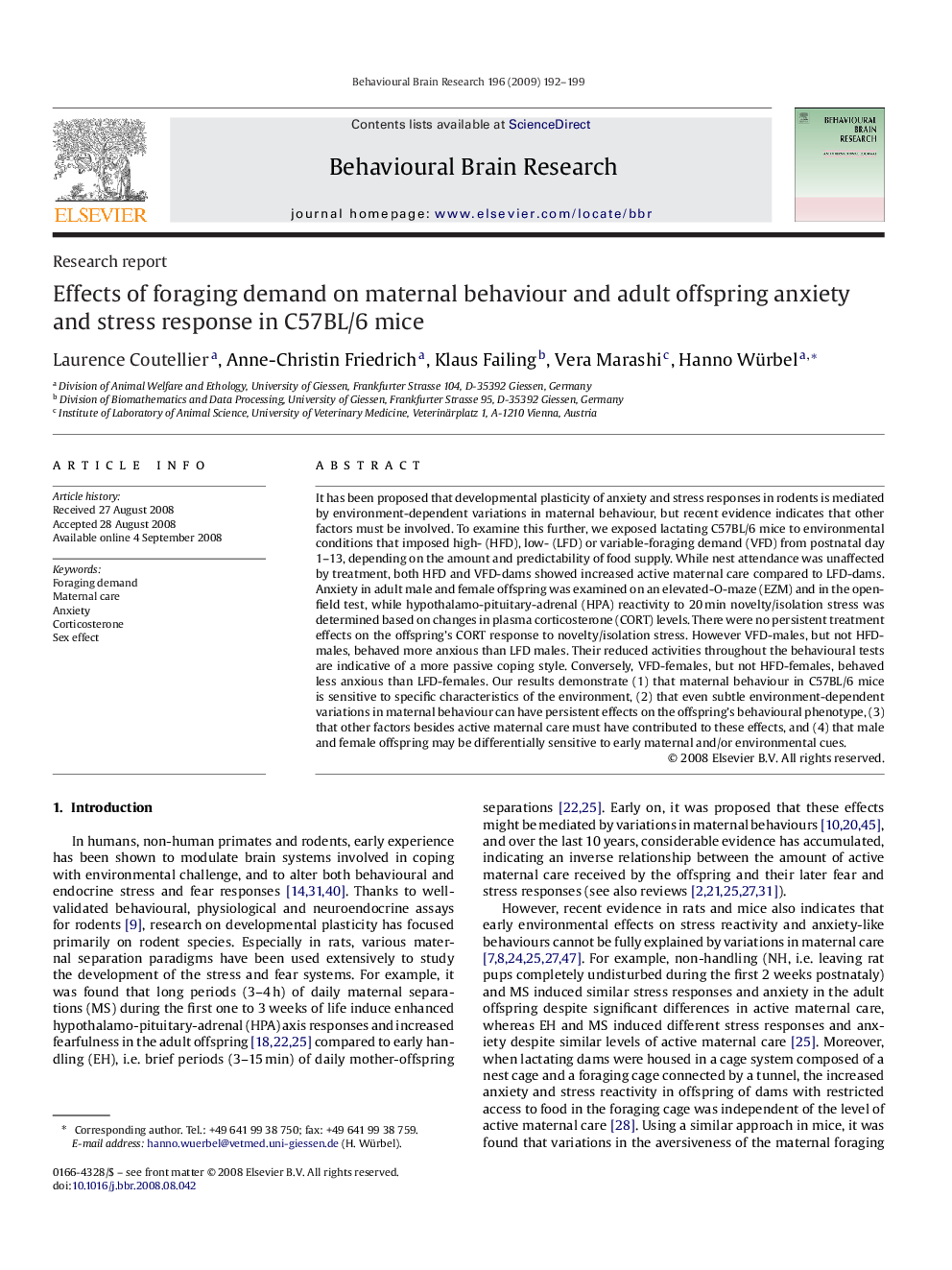| Article ID | Journal | Published Year | Pages | File Type |
|---|---|---|---|---|
| 4315112 | Behavioural Brain Research | 2009 | 8 Pages |
It has been proposed that developmental plasticity of anxiety and stress responses in rodents is mediated by environment-dependent variations in maternal behaviour, but recent evidence indicates that other factors must be involved. To examine this further, we exposed lactating C57BL/6 mice to environmental conditions that imposed high- (HFD), low- (LFD) or variable-foraging demand (VFD) from postnatal day 1–13, depending on the amount and predictability of food supply. While nest attendance was unaffected by treatment, both HFD and VFD-dams showed increased active maternal care compared to LFD-dams. Anxiety in adult male and female offspring was examined on an elevated-O-maze (EZM) and in the open-field test, while hypothalamo-pituitary-adrenal (HPA) reactivity to 20 min novelty/isolation stress was determined based on changes in plasma corticosterone (CORT) levels. There were no persistent treatment effects on the offspring’s CORT response to novelty/isolation stress. However VFD-males, but not HFD-males, behaved more anxious than LFD males. Their reduced activities throughout the behavioural tests are indicative of a more passive coping style. Conversely, VFD-females, but not HFD-females, behaved less anxious than LFD-females. Our results demonstrate (1) that maternal behaviour in C57BL/6 mice is sensitive to specific characteristics of the environment, (2) that even subtle environment-dependent variations in maternal behaviour can have persistent effects on the offspring’s behavioural phenotype, (3) that other factors besides active maternal care must have contributed to these effects, and (4) that male and female offspring may be differentially sensitive to early maternal and/or environmental cues.
